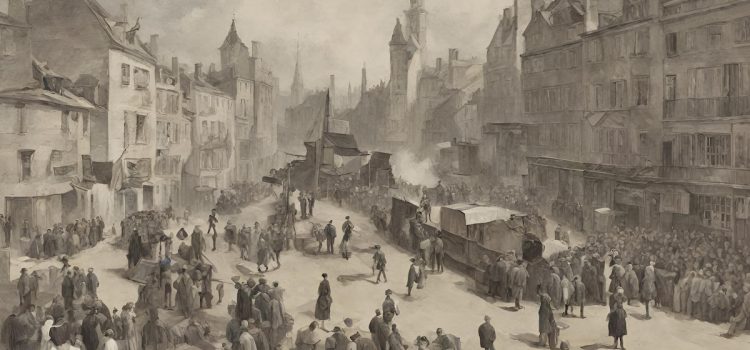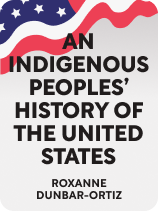

This article is an excerpt from the Shortform book guide to "An Indigenous Peoples' History of the United States" by Roxanne Dunbar-Ortiz. Shortform has the world's best summaries and analyses of books you should be reading.
Like this article? Sign up for a free trial here.
Why did the forced migration of Native Americans happen? What violence forced them to move?
The forced migration of Native Americans occurred as Europeans moved westward and demanded more territory. Migration was often deadly and meant leaving sacred, ancestral homes.
Read more to see how Native Americans resisted westward expansion and how they were ultimately forced out of their homes.
Native Americans and Westward Expansion
In her book An Indigenous Peoples History of the United States, historian Roxanne Dunbar-Ortiz explains that Native Americans resisted efforts to seize their territories and perpetrate genocide against them in the US’s first hundred years. For example, the Shawnee hero Tecumseh and his brother, Tenskwatawa, organized a resistance movement in the early 1800s that intended to unite all native peoples in a refusal to cede or sell any more indigenous lands to settlers. However, as they’d done during the colonial period, settlers generally responded to such acts of resistance with even greater violence—future president William Henry Harrison’s forces waged total war against Tecumseh’s people and destroyed the resistance movement. The forced migration of Native Americans happened only after great resistance.
(Shortform note: Experts suggest that Harrison’s use of coercive treaties is what spurred Tecumseh and Tenskwatawa to resist further settlement by the US: In one case, Harrison won 51 million acres across present-day Illinois, Wisconsin, and Missouri by plying native representatives with alcohol. Tecumseh and Tenskwatawa grew up in the shadow of such violence and coercion by settlers and developed a two-pronged resistance approach: Tenskwatawa outlined a spiritual vision of indigenous victory while Tecumseh led warriors in battle. Their movement lost power when Harrison’s forces killed Tecumseh in 1813; Tenskwatawa eventually helped convince the remaining Shawnee to relocate to Indian territory.)
In addition to these methods of resistance, Native Americans survived by migrating when settler violence threatened to overtake their communities. For example, many members of the Muscogee resistance forces Andrew Jackson fought against joined the Seminole Nation, a Florida conglomerate of indigenous survivors and Africans who had escaped slavery. Similarly, when the US tried to force indigenous nations to move to Indian territory, many people fled to Canada or Mexico instead, and others outright refused to move. They lost legal claim to their ancestral homelands and sometimes even their legal identities as Native Americans, but Dunbar-Ortiz explains that their decision to remain helped later generations restore those rights.
(Shortform note: After the Muscogee joined the Seminole Nation, the Seminoles continued to lead a fierce resistance movement against the US over the course of three Seminole Wars between 1817 and 1858. The majority of Seminoles refused to migrate until their leader, Osceola, was captured by US forces as he tried to negotiate with them during a truce during the Second Seminole War. Even after that, a non-negligible amount of Seminoles remained in their Florida home—the Third Seminole War erupted when the US attempted to remove them. Because they’d been significantly weakened, the Seminole resistance faltered and most of their people were removed westward.)
Native Americans also sometimes attempted to survive by assimilating—that is, taking on aspects of the dominant (US) culture. For example, some Catholic missions in California imprisoned, tortured, and killed California Indians, and incarcerated Native Americans had to adopt Christianity and European ways of life to survive. Although assimilation can help individuals survive, if it’s carried out on a large-enough scale, it eventually leads to the erasure of subordinate cultures. Dunbar-Ortiz notes that some Native Americans resisted assimilation to ensure that their cultures would live on. For example, natives who escaped from Catholic missions in California engaged in guerrilla war; their descendants carried on their traditions.
(Shortform note: To force California Indians to convert, Spain commissioned 21 Catholic missions (religious settlements). Spanish authorities forced local natives to build the missions and live inside them, where they were watched closely by priests who enforced Catholic rules. Spain thought this would civilize and win the loyalty of Californian Indians. But experts note that forced assimilation is seldom effective—this is clear in the case of the Californian missions, as many indigenous people escaped and returned only to raid and destroy the missions they’d been forced to build. However, their resistance efforts couldn’t prevent every loss—the missions contributed to the extinction or near-extinction of several native Californian languages.)
| What’s Lost When Indigenous Peoples Are Forced to Migrate? As Dunbar-Ortiz mentions, many indigenous nations staunchly refused to migrate at the US government’s behest. The Seminoles went to war multiple times over this issue, and many Native Americans moved to Canada or Mexico instead of Indian Territory. Why did they resist migration so strongly? For one thing, many indigenous cultures profess a spiritual attachment to their ancestral homelands. It’s also important to note that at the time, travel was exceedingly dangerous and the lands indigenous peoples were assigned to were inhospitable. This meant that migration could threaten their survival. However, in some cases, migration was their best or only option, so they undertook long journeys despite the dangers. This pattern continues in South America today, where indigenous peoples whose lifeways are under attack migrate from rainforests and rural areas to cities but often suffer greatly for it. Dunbar-Ortiz also mentions that migration (and refusal to migrate) has legal consequences for indigenous peoples. We see this pattern, too, continued in South America: While many indigenous South Americans are being pushed out of their ancestral homelands, others remain to fight for and retain land rights. In many cases, they already have legal claim to their lands, but colonial governments won’t enforce those claims, so they have to stay home and protect their land rights themselves. |

———End of Preview———
Like what you just read? Read the rest of the world's best book summary and analysis of Roxanne Dunbar-Ortiz's "An Indigenous Peoples' History of the United States" at Shortform.
Here's what you'll find in our full An Indigenous Peoples' History of the United States summary:
- A retelling of US history from a Native American perspective
- What led Europe to colonize the Americas
- How patterns of genocide and resistance have played out over the course of US history






